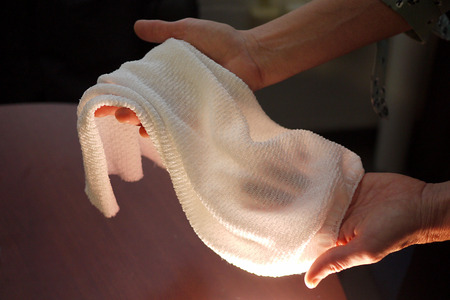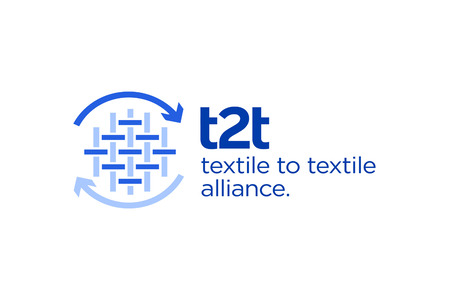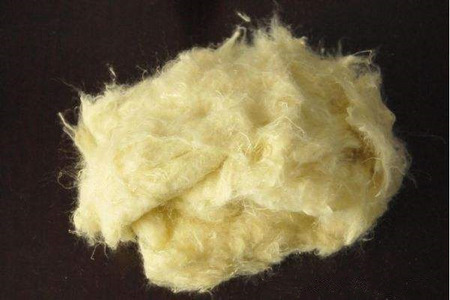
Karl Mayer Tricot technology generating strong demand from sari producers
YarnsandFibers News Bureau 2014-09-17 12:00:00 – GermanyHigh speed tricot technology from Karl Mayer has been proposed as a perfect model for the sari industry, as warp-knitted burnt-out fabrics can be produced very efficiently and are generally more supple than the woven versions – characteristics that have been generating a strong demand for them from sari producers for some time now.
In the latest sample from Karl Mayer, the decorative textile features oriental pattern motifs in a filigree construction, which were placed all over the lightweight ground – a traditional sari design produced on a high-tech machine.
An HKS 4 in a gauge of E 28 was used to produce it. Ground guide bars GB 2 to GB 4 of this high-speed tricot machine produced a marquisette ground, into which ground guide bar GB 1 worked a tricot construction.
The underlap of the tricot construction was therefore placed on the upper side of the fabric. By using the different yarns – polyester monofilaments of 22 dtex in GB 2 to GB 4 and viscose of dtex 67 f 24 in GB 1 - the dense, non-stretch, warp-knitted textile was decorated in a subsequent finishing stage using a screen and etching paste. In this process, which is known as the burn-out technique, the viscose is removed as required to create the intended design. The result is a semi-transparent fabric, on which the pattern elements, with their delicate shimmer and sharp contours, protrude slightly three-dimensionally from the surface.
This look can be varied by using a tulle ground lapping, which can be worked on a high-speed tricot machine with three guide bars. The burnt-out fabrics produced by using the HKS 3-M are lighter and more delicate, and are therefore also more unstable than the higher-quality version based on marquisette.
The viscose yarns used can be processed on the HKS 4 without any problems. When using these yarns, which are made from regenerated cellulose, the machine can reach speeds of 1,200 min-1.
The burn-out technique has become well established for use in the all-over patterning of large areas of textiles.
Market Intelligence
Ask for free sample Report

experience
Customer Base
dedicated team
Countries Served Worldwide









